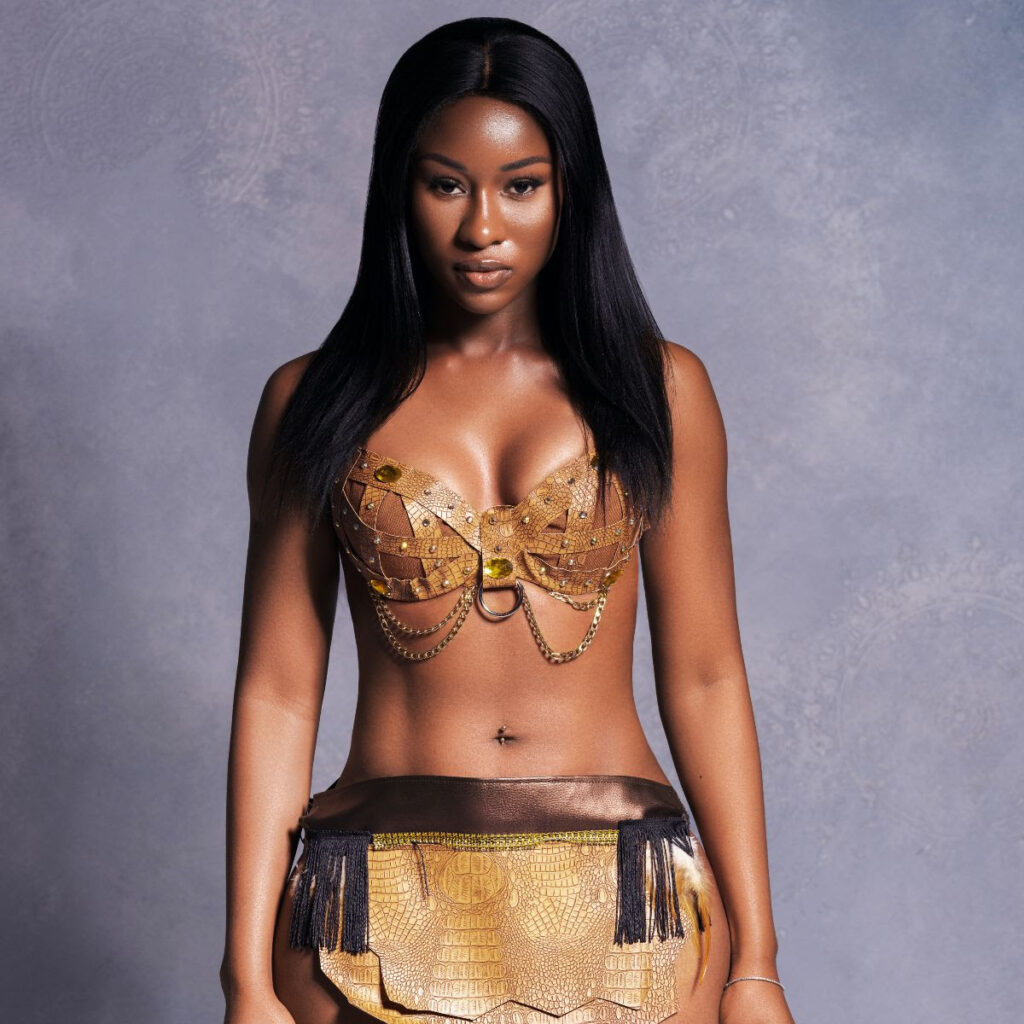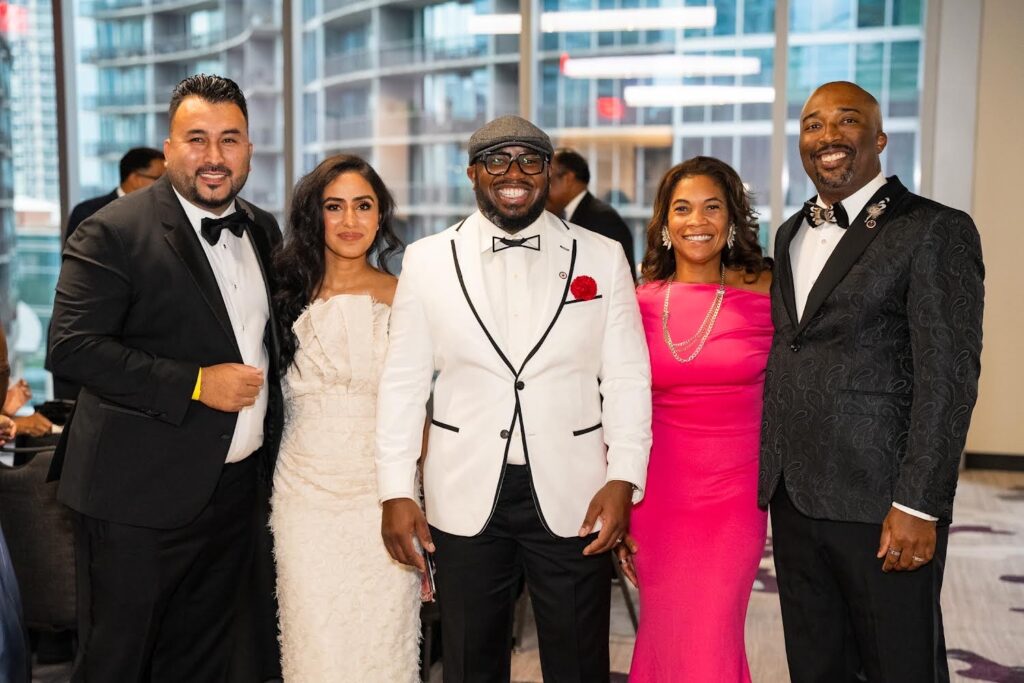Amazon’s “Them” wants its mantle in the current horror echelon, mainly when it occurs to freshly arranged anecdotes regarding being Black in America. In its rejoinder to a country currently studying the on-camera assassination of a Black man by a white police officer, the Series produced by Little Marvin converses in cutting heights.
—It’s ten episodes deep, compressed with all camera methods in the book, and flooding with Black American ordeal.
This is a set that goes there, at entire impetus, exercising a Black family’s suburban crisis in the 1950s as a representation of all that happened before and after it. It’s more effectively horrific than horror and more accessible to accept as loving exploitation than ferocious unique design. Among its multiple frustrating details, it produces further important issues about when sharp shock in fear displays a portion of the method, despite the severe sensitive circumstances.
The Series takes place across ten days in sunny East Compton, CA, “Them” describes what occurs when the Emory, a Black family from North Carolina, move into the wildly white neighborhood. From the very beginning, they are matched with powerful resentment as the neighbors all resort outside their current home and boom their music, resting in the center of the road as if they’d preferably be connected by a car than have this family in their community.
But Henry Emory (Ashley Thomas) and his spouse Lucky (Deborah Ayorinde) admit that they’re not going to leave anymore, gritting their roots through the white sonace. With Karen Stepfords like Alison Pill’s Betty heading the command, the neighbors attempt to bother and dehumanize them while keeping so-called niceness approaching everyone that’s included. Episode one concludes with the white next-door neighbor poisoning their puppy, and this offensive performance causes Lucky to attain up to those who were watching, Henry’s rifle in his hand. But it simply performs the neighbors’ utilize their tremendous concern into even further burning horror.
Each of the Emory’s has a curve that could support its movie but is located here as an intertwining story of various descents into delusion linked to identification and prejudice. Henry begins with his career as an engineer covering all kinds of racist comments while holding the only Black character in his office. Every time his stupid manager reduces Henry or states something invasion, Henry doesn’t just consume his tongue; he presses his whole essence. He earlier had labored in World War II and has established himself in the department, but he understands that his modern context informs him he must work with it. Henry’s storyline seems to be commonly passive.
Henry is not isolated in understanding supernatural characters, as all the other Emory have their communications with foreign individuals that indicate their emotional disturbance. At the same time, dispensing with her shock (explained next in the story), Lucky reviews what occurred to other Black families who traveled to the field while going into an infinite gauntlet of activities concerning backstory that is following explained. Meanwhile, her 14-year-old daughter Ruby (Shahadi Wright Joseph) doesn’t want or idolized her mother and handles her institution’s prejudice. Then juvenile Gracie, the naivest and most minor advanced member of the family, has her perceptions at the Emory shelter, compared to a novel she’s been studying from.
These disturbing accounts are shown with great passionate work from its principal cast, particularly as the story often grants them right into an ordeal. It’s only following in the other half (160 minutes or so later) that it seems like the account strengthens ahead its wish to reflect complete horror and begins to question about what arises when these personalities attack after, making choices from which they can’t swing around. But then the tricks of the account take over, and “Them” awkwardly combines its spiritual and headlines fright.
“Them” shows that it’s not scared to be horrifying and brew switches of trouble, particularly as the Emory meet further and offensive horror from their next-door neighbor.
The terror of the Series becomes an especially keen storytelling project entirely, and it begins to exert up further and added range. Take the series’ continued center on white supremacy points, like with Alison Pill’s Betty. For all that she transmits her fantastic display, with her bound grin and dynamic behavior amidst her adolescent companions, the exhibitions were concentrating on white characters in global play out like waste.
Again, and repeat, their views of plotting against the Emory’s or arguing about them in before-mentioned dehumanizing actions suggest to the observer that certain characters are the scoundrels—something we efficiently receive from the opening but is provided so scarcely to produce with. A more general view of the destructive environment of white supremacy and how it can hurt its divisions are displayed.
The series’ most potent episode begins in the middle, as guided by Janicza Bravo (“Lemon”). Bravo’s experience transfers a height that, like much of tunnels in “Them,” launches its method in its storytelling aspect.
But is at most restricted more connection than the category’ usual jump-scare occult horror—it manages its destructive details as pervasive energy.
When attempting to understand more of “Them” and all that it’s aiming for, there’s a newfangled product selection that does not uniquely transfer the stench test—it primarily supports white fear film producer’s storytelling (and men for nine of its ten scenes). This response replies to the Series having an exhausted passageway, giving it an uncomfortable space of being inspired by aesthetics and engaging whiteness to take direction in one way. Questions may carry What does it imply when a production so explicitly is regarding Black injury is hardly being directed by Black directors? Any diverse Black executives did they initially address?
“Them” can be an outstanding series, whether one judges to follow it as an offensive performance. Or simply a way to accept traumatic encounters of racist brutality in human history.
The dissonance seems to develop from its two movements, both requiring to be passive and, in your direction, as well as maybe over the top and making a statement.
Follow Us On Social Media!




